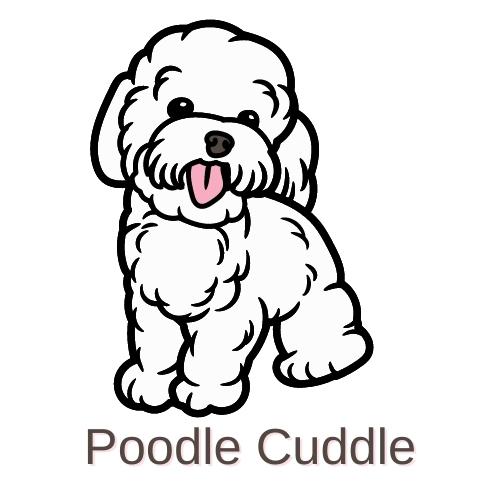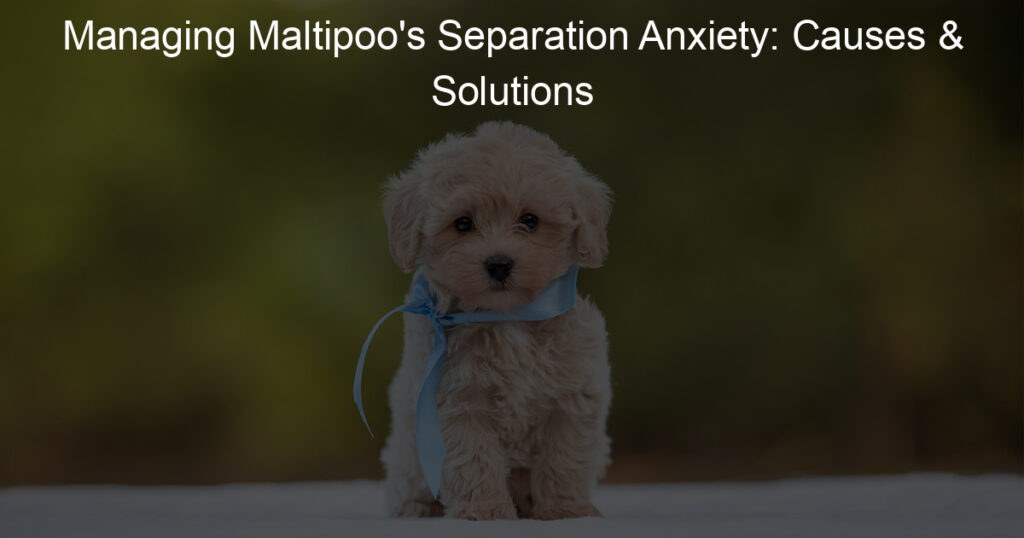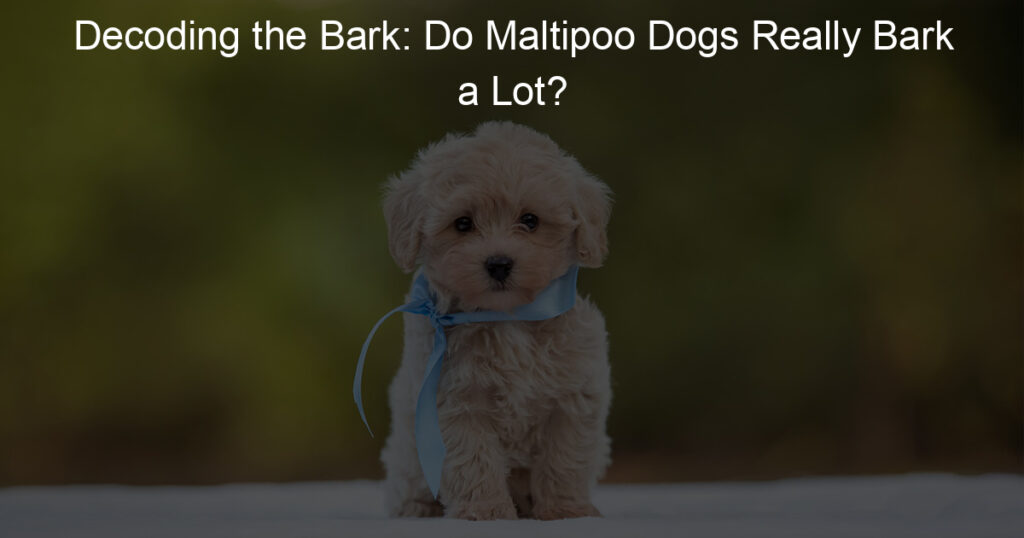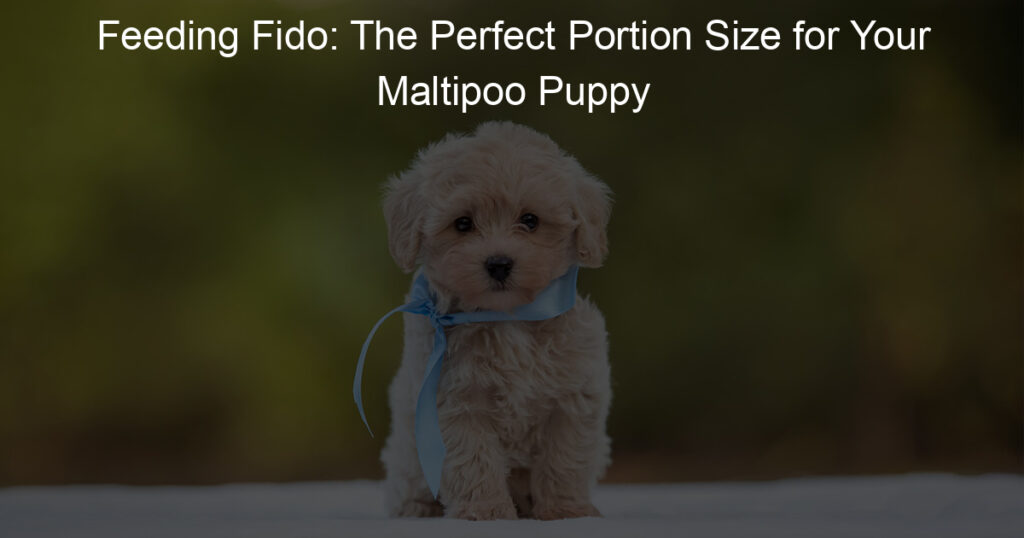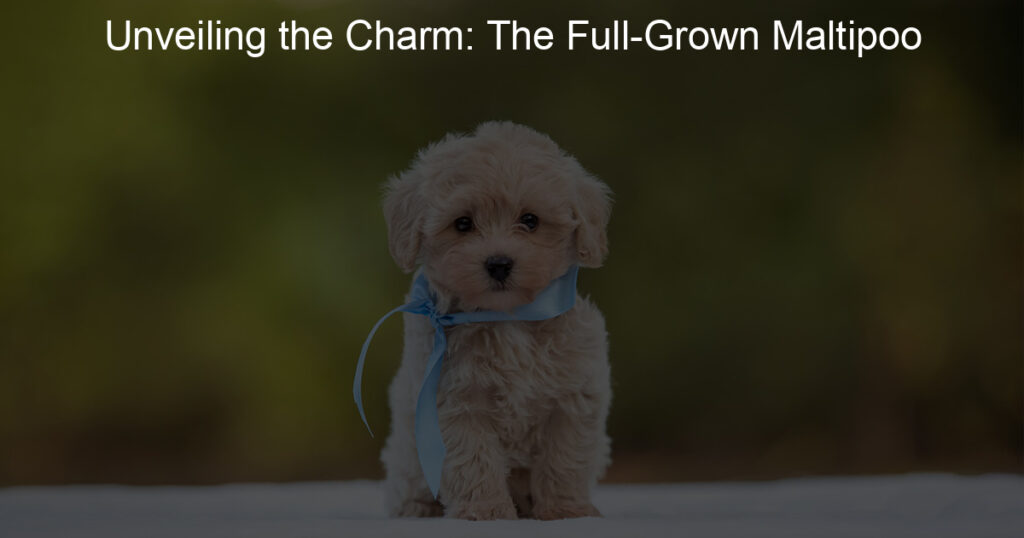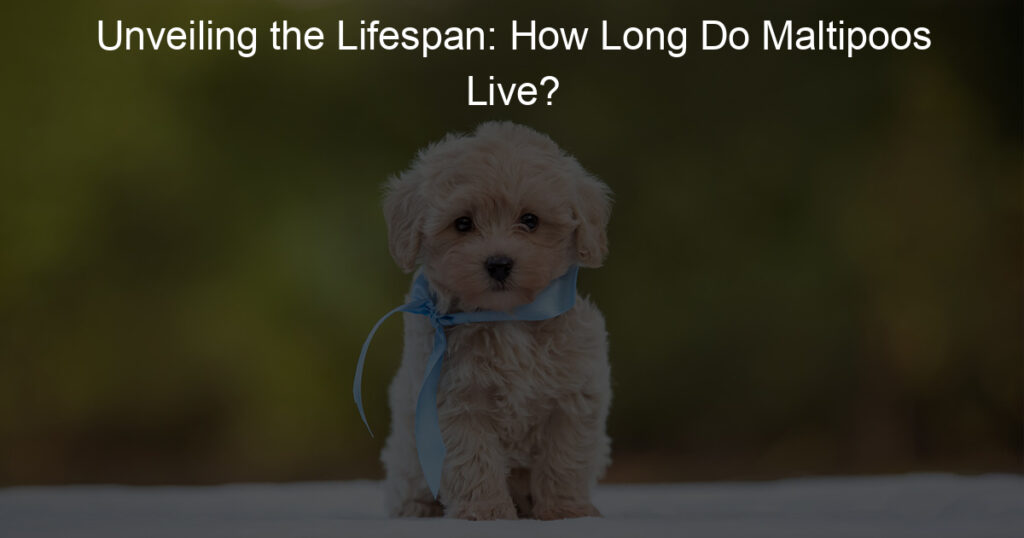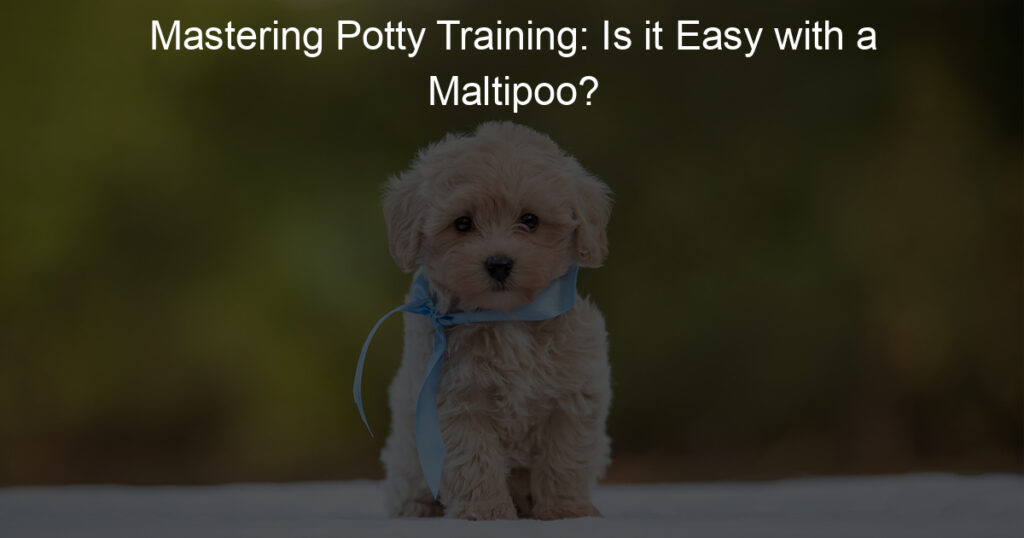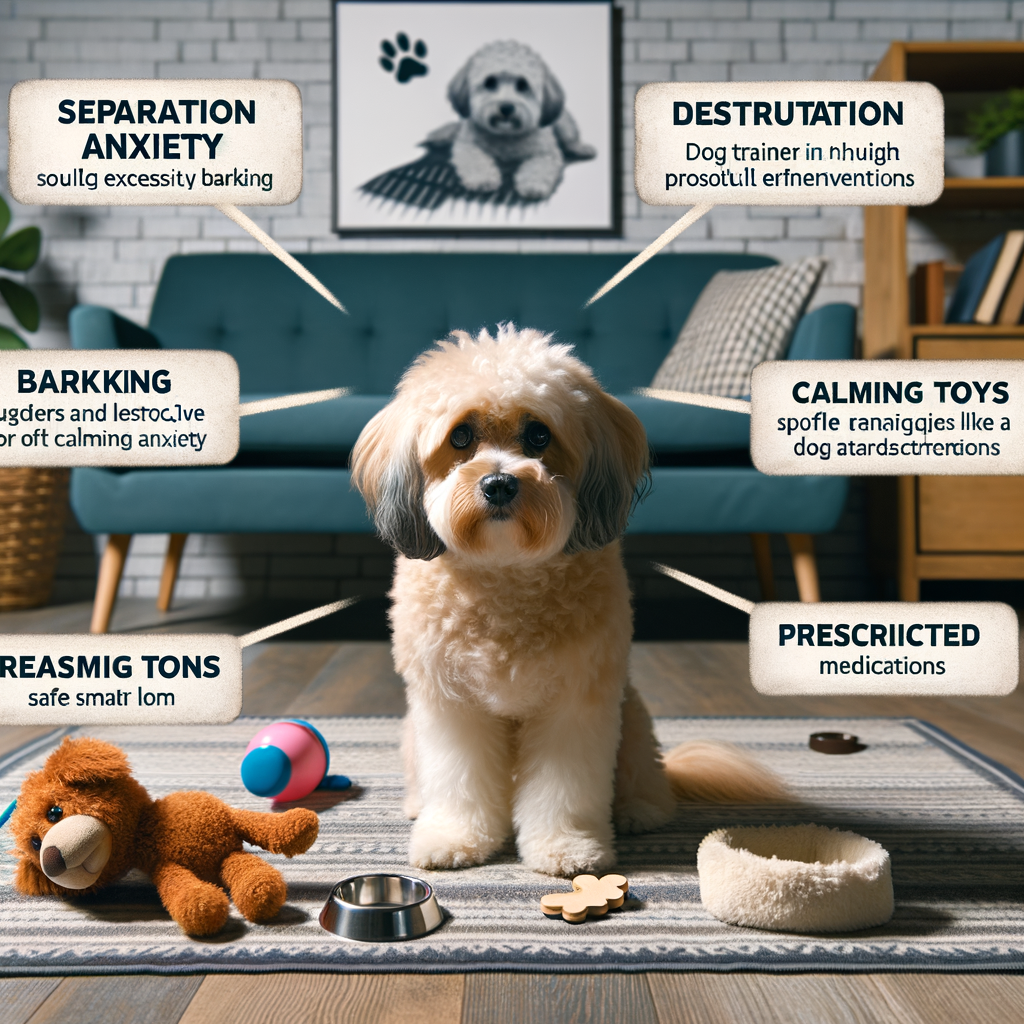
Introduction to Maltipoo Separation Anxiety
Separation anxiety is a common issue among dogs, and Maltipoos are no exception. In this article, we will delve into understanding this condition and how it specifically affects Maltipoos. Our aim is to provide you with comprehensive knowledge on this topic, so you can better understand your furry friend and help them navigate through their anxiety.
- Understanding Separation Anxiety in Dogs
- Specifics of Maltipoo Anxiety Issues
Separation anxiety in dogs is a distressing condition that occurs when a dog is left alone or separated from their human companions. This can lead to a variety of behavioral issues, such as excessive barking, destructive behavior, and even attempts to escape. It’s important to understand that dogs with separation anxiety are not misbehaving out of spite or revenge, but they are genuinely distressed and upset due to their fear of being alone.
Maltipoos, a crossbreed of Maltese and Poodles, are known for their friendly and affectionate nature. They form strong bonds with their human families, which unfortunately can make them more susceptible to separation anxiety. Maltipoos may exhibit signs of anxiety such as excessive barking, chewing on furniture or other items, and showing signs of restlessness or agitation when left alone. Understanding the specifics of Maltipoo anxiety issues is the first step towards helping your pet cope with their anxiety.
In the following sections, we will delve deeper into the causes of separation anxiety in Maltipoos, the symptoms to look out for, and the various treatment options available. Our goal is to equip you with the knowledge and tools to help your Maltipoo live a happier, anxiety-free life.
Causes of Separation Anxiety in Maltipoos
Understanding the causes of separation anxiety in Maltipoos is crucial for managing and treating this condition. One of the key factors that contribute to this issue is genetics.
Genetic Factors
Genetics play a significant role in determining a Maltipoo’s predisposition to separation anxiety. This can be seen in two main areas: the role of breed in separation anxiety and the Maltipoo’s genetic predisposition to anxiety.
- Role of Breed in Separation Anxiety
- Maltipoo’s Genetic Predisposition to Anxiety
Some dog breeds are more prone to separation anxiety than others. This is due to the specific traits that have been bred into them. For instance, Maltipoos, a crossbreed of Maltese and Poodles, inherit the intelligence and sensitivity of their parent breeds. These traits can make them more susceptible to anxiety when left alone.
Maltipoos are genetically predisposed to anxiety because of their parent breeds. Both Maltese and Poodles are known for their high-strung temperaments and sensitivity to their environment. This means that Maltipoos are more likely to develop separation anxiety compared to other breeds. It’s important to note that not every Maltipoo will experience this, but their genetic makeup does increase the risk.
In conclusion, genetics play a significant role in a Maltipoo’s susceptibility to separation anxiety. Understanding this can help owners take preventative measures and seek appropriate treatment when necessary.
Environmental Factors
There are several environmental factors that can contribute to separation anxiety in Maltipoos. Let’s explore two of the most significant ones: the impact of early life experiences and the role of the owner’s behavior.
-
Impact of Early Life Experiences
Early life experiences play a crucial role in shaping a Maltipoo’s behavior and emotional health. Puppies that have been separated from their mothers too early, or those that have experienced traumatic events, are more likely to develop separation anxiety. For instance, a puppy that was abandoned or neglected may become overly attached to its new owner and may panic when left alone.
It’s important to remember that these early experiences don’t determine a dog’s future. With patience, love, and proper training, a Maltipoo can learn to cope with its anxiety.
-
Role of Owner Behavior in Triggering Anxiety
The way an owner behaves can also trigger separation anxiety in Maltipoos. If an owner is overly anxious or protective, the dog may pick up on these emotions and become anxious as well. Similarly, if an owner makes a big fuss when leaving or returning home, it can create anxiety in the dog.
It’s important for owners to remain calm and composed, especially during periods of separation. This can help reassure the dog and reduce its anxiety. Additionally, establishing a consistent routine can also help a Maltipoo feel more secure and less anxious.
In conclusion, understanding and addressing these environmental factors can go a long way in managing and reducing separation anxiety in Maltipoos. Remember, every dog is unique and what works for one might not work for another. It’s always best to consult with a professional if you’re struggling with your dog’s anxiety.
Maltipoo Anxiety Symptoms
Understanding the signs of anxiety in your Maltipoo is the first step towards helping them cope. Anxiety in Maltipoos manifests in various ways, and it’s essential to recognize these symptoms early to provide the necessary support. Here are some common symptoms of anxiety in Maltipoos:
- Excessive Barking or Howling
- Chewing, Digging, and Destruction
- Escaping When Left Alone or Separated
- Coping with Physical Symptoms of Anxiety
One of the first signs of anxiety in Maltipoos is excessive barking or howling, especially when left alone. This behavior is a clear indication of distress and a cry for attention or help.
Maltipoos with anxiety may resort to destructive behaviors such as chewing on furniture or digging holes in the yard. This is their way of releasing pent-up energy or stress.
If your Maltipoo attempts to escape when left alone or separated from you, this could be a sign of separation anxiety. They may scratch doors, chew through barriers, or find other ways to escape.
Physical symptoms such as trembling, panting, or excessive drooling can also indicate anxiety in Maltipoos. If your pet shows these signs, especially in situations that don’t typically cause fear or stress, it’s likely they’re dealing with anxiety.
Recognizing these symptoms is crucial for the well-being of your Maltipoo. If you notice any of these signs, it’s important to consult with a veterinarian or a professional dog trainer to discuss possible treatments and strategies to help your pet cope with their anxiety.
Maltipoo Behavior Problems Related to Anxiety
When a Maltipoo experiences anxiety, it can lead to several behavior problems. These problems can be distressing for both the dog and the owner. Understanding these behaviors can help you identify if your Maltipoo is suffering from anxiety and take the necessary steps to help them. Let’s take a closer look at the most common behavior problems related to anxiety in Maltipoos.
- Aggression
- Depression
- Compulsive Behavior
Aggression is a common behavior problem in Maltipoos suffering from anxiety. They may become snappy, growl, or even bite when they feel threatened or scared. This is their way of protecting themselves when they are feeling anxious. It’s important to remember that this aggression is not a sign of a bad dog, but rather a symptom of their anxiety.
Just like humans, dogs can also suffer from depression. Maltipoos with anxiety may show signs of depression such as loss of interest in activities they once enjoyed, changes in eating and sleeping habits, and a general lack of energy. If your Maltipoo is showing these signs, it could be a sign that they are dealing with anxiety.
Compulsive behavior is another common symptom of anxiety in Maltipoos. This can include behaviors such as excessive licking or chewing, pacing, or repetitive barking. These behaviors can be a way for your Maltipoo to try and cope with their anxiety. If you notice your Maltipoo displaying any of these behaviors, it’s important to consult with a vet or a professional dog trainer to help manage their anxiety.
In conclusion, if your Maltipoo is showing signs of aggression, depression, or compulsive behavior, it could be a sign that they are dealing with anxiety. It’s important to remember that these behaviors are not a reflection of your dog’s character, but rather a symptom of their anxiety. By understanding these behaviors and seeking professional help, you can help your Maltipoo manage their anxiety and live a happier, healthier life.
Maltipoo Anxiety Treatment
When it comes to treating anxiety in Maltipoos, there are several effective methods. One of the most beneficial approaches is seeking professional help. This can involve consulting with a veterinarian or working with a professional dog trainer. Let’s explore these options in more detail.
Professional Help
Professional help can be a game-changer in managing your Maltipoo’s anxiety. It’s important to remember that every dog is unique, and what works for one might not work for another. That’s why professional advice can be so valuable. Here are two key professional resources you can turn to:
- Consulting with a Veterinarian
- Working with a Professional Dog Trainer
A veterinarian is a great first point of contact when dealing with your Maltipoo’s anxiety. They can conduct a thorough examination to rule out any medical conditions that may be contributing to the anxiety. Furthermore, they can provide advice on potential treatments, which may include medication or behavioral therapy.
A professional dog trainer who specializes in anxiety issues can be a great asset. They can work with your Maltipoo to help them feel more secure when they’re alone, and teach you techniques to reinforce this training at home. Remember, consistency is key when it comes to training.
In conclusion, professional help can be a significant part of treating your Maltipoo’s anxiety. Whether it’s a veterinarian or a professional dog trainer, these experts can provide the guidance and support you need to help your furry friend feel safe and secure.
Medication
When it comes to treating your Maltipoo’s separation anxiety, there are a variety of medication options available. These can be divided into two main categories: prescription medications and over-the-counter remedies. Let’s explore each of these in more detail.
-
Prescription Medication Options
Prescription medications are powerful tools that can help manage your Maltipoo’s anxiety. These are prescribed by a veterinarian and are often used in severe cases of separation anxiety. They work by altering the chemical balance in your dog’s brain to help them feel calmer.
Some common types of prescription medications used for treating separation anxiety in dogs include Selective Serotonin Reuptake Inhibitors (SSRIs) and Benzodiazepines. SSRIs, like Fluoxetine, work by increasing the levels of serotonin in the brain. Serotonin is a chemical that helps regulate mood and anxiety. Benzodiazepines, on the other hand, are fast-acting medications that can help calm your dog in stressful situations.
Remember, prescription medications should only be used under the guidance of a veterinarian. They can have side effects and may not be suitable for all dogs.
-
Over-the-Counter Remedies
Over-the-counter remedies are another option for treating your Maltipoo’s separation anxiety. These are products that you can buy without a prescription. They are usually milder than prescription medications and are often used for mild to moderate cases of separation anxiety.
Some common over-the-counter remedies include calming sprays, diffusers, and chews. These products often contain natural ingredients like chamomile and lavender, which are known for their calming properties. They work by creating a calming environment for your dog or by helping them relax.
While over-the-counter remedies can be helpful, they may not be enough for severe cases of separation anxiety. Always consult with a veterinarian if you’re unsure about what treatment is best for your Maltipoo.
Training Maltipoos for Separation Anxiety
Training your Maltipoo to manage separation anxiety is a crucial step towards ensuring their mental well-being. One of the most effective ways to do this is by establishing a routine.
Establishing a Routine
Creating a consistent routine for your Maltipoo can help them feel secure and reduce their anxiety. This routine should include regular feeding times, playtimes, and walks. Let’s delve into the importance of a consistent schedule and creating a safe space for your Maltipoo.
- Importance of a consistent schedule
- Creating a safe space for your Maltipoo
Having a consistent schedule provides your Maltipoo with a sense of security. Dogs thrive on predictability, and knowing what to expect can help reduce their anxiety. For instance, feeding your Maltipoo at the same time every day can help them understand that they will not be left without food, which can be a significant source of anxiety for many dogs.
Providing a safe, comfortable space for your Maltipoo can also help manage their separation anxiety. This could be a specific room or a crate where they feel secure. Fill this space with their favorite toys and blankets to make it more comforting. Remember, this should be a positive space for your Maltipoo, never used for punishment.
Establishing a routine and creating a safe space for your Maltipoo are just the first steps in training them to manage separation anxiety. With patience and consistency, you can help your furry friend feel more secure when you’re not around.
Training Techniques
When it comes to training Maltipoos for separation anxiety, there are two main techniques that are often used. These are gradual desensitization and counter-conditioning. Both of these techniques can be very effective when used correctly. Let’s take a closer look at each one.
-
Gradual Desensitization
Gradual desensitization is a technique that involves slowly getting your Maltipoo used to being alone. This is done by leaving them alone for short periods of time and gradually increasing the length of time they are left alone. The goal is to help your Maltipoo understand that being alone is not something to be afraid of.
For example, you might start by leaving your Maltipoo alone for just a few minutes at a time. Once they are comfortable with this, you can increase the time to 10 minutes, then 20 minutes, and so on. The key is to go at a pace that your Maltipoo is comfortable with.
-
Counter-Conditioning
Counter-conditioning is another technique that can be used to help Maltipoos with separation anxiety. This technique involves changing your Maltipoo’s emotional response to being alone. Instead of feeling anxious and scared, the goal is to help them feel calm and relaxed.
One way to do this is by associating being alone with positive experiences. For example, you might give your Maltipoo a special treat or toy that they only get when they are alone. Over time, this can help change their emotional response to being alone.
Remember, every Maltipoo is unique and what works for one might not work for another. It’s important to be patient and consistent with your training. With time and effort, you can help your Maltipoo overcome their separation anxiety.
Managing Separation Anxiety in Maltipoos
Separation anxiety can be a challenging issue for Maltipoos and their owners. However, with the right strategies and a lot of patience, it can be managed effectively. In this section, we will explore long-term strategies for managing anxiety and the importance of patience and consistency.
- Long-term strategies for managing anxiety
- Importance of patience and consistency
Long-term strategies are crucial in managing separation anxiety in Maltipoos. These strategies can include creating a safe space for your pet, establishing a routine, and using positive reinforcement. A safe space can be a specific room or a crate where your Maltipoo feels comfortable and secure. Establishing a routine can help your pet understand when you will be away and when you will be back. Positive reinforcement, such as treats or praise, can be used to reward your pet for calm behavior.
Another effective long-term strategy is gradual desensitization. This involves slowly getting your Maltipoo used to being alone. Start with short periods of separation and gradually increase the duration. This process can take time, but it can significantly reduce anxiety levels.
Patience and consistency are key when managing separation anxiety in Maltipoos. It’s important to remember that change takes time. Your pet may not respond to the strategies immediately, but with patience and consistency, progress can be made.
Consistency in your approach is crucial. If you’re using a certain strategy, stick with it. Changing strategies frequently can confuse your pet and hinder progress. Similarly, patience is needed as your Maltipoo adjusts to the new routine or strategy. It’s normal for progress to be slow, but with time, your pet’s anxiety should decrease.
In conclusion, managing separation anxiety in Maltipoos requires long-term strategies, patience, and consistency. It may be a challenging process, but with the right approach, you can help your pet feel more secure and comfortable even when you’re not around.
Conclusion
In this article, we’ve covered a lot about Maltipoo separation anxiety. Let’s take a moment to recap the key takeaways and offer some encouragement for those dealing with this issue.
- Recap of Key Takeaways
- Encouragement for Owners Dealing with Maltipoo Separation Anxiety
Separation anxiety in Maltipoos can be caused by various factors, including a change in routine or environment, lack of socialization, or past traumatic experiences. Symptoms can range from excessive barking, chewing, or even self-harm. However, it’s important to remember that these behaviors are not a sign of disobedience, but a cry for help.
There are several ways to treat and manage separation anxiety in Maltipoos. This can include behavior modification training, creating a safe space for them, and even medication in severe cases. Remember, patience and consistency are key in helping your Maltipoo overcome their anxiety.
If you’re dealing with Maltipoo separation anxiety, remember that you’re not alone. Many Maltipoo owners have faced this issue and have successfully helped their furry friends overcome it. It may take time and patience, but with consistent effort and the right approach, your Maltipoo can learn to cope with their anxiety.
Remember, your Maltipoo’s wellbeing is a priority. Don’t hesitate to seek professional help if you’re struggling with managing their anxiety. There are many resources available to help you and your Maltipoo live a happy, anxiety-free life.
Dealing with Maltipoo separation anxiety can be challenging, but remember, every step you take towards helping your Maltipoo is a step towards a happier, healthier life for them. Keep going, you’re doing great!
